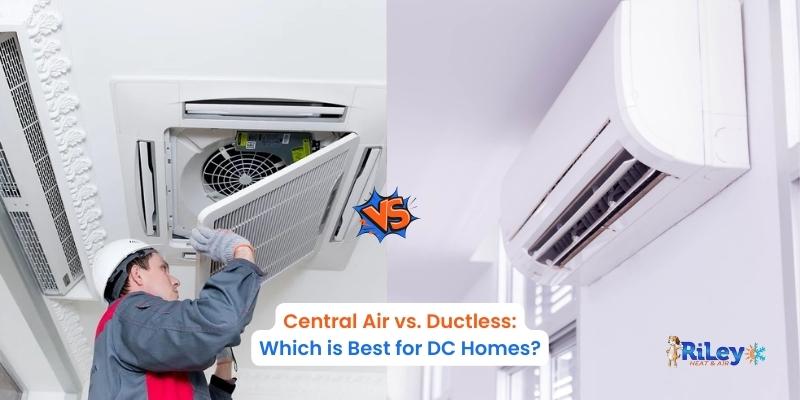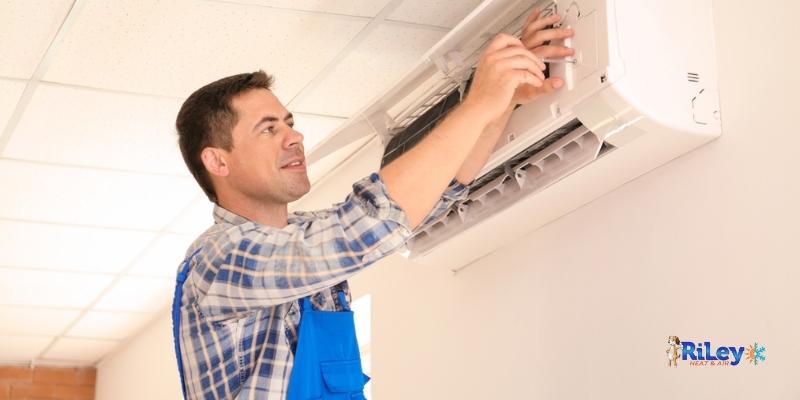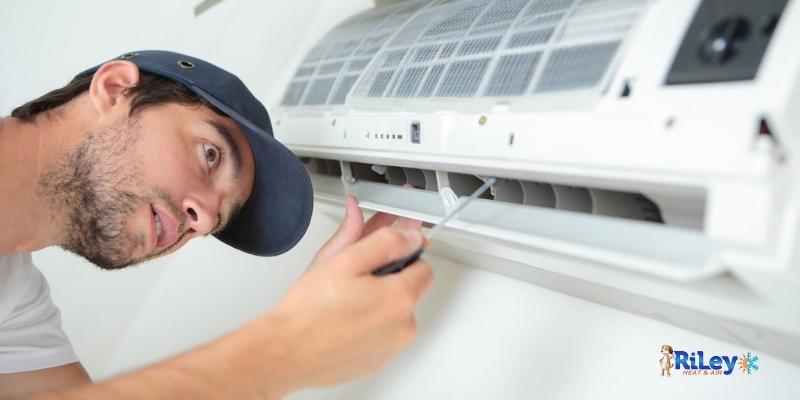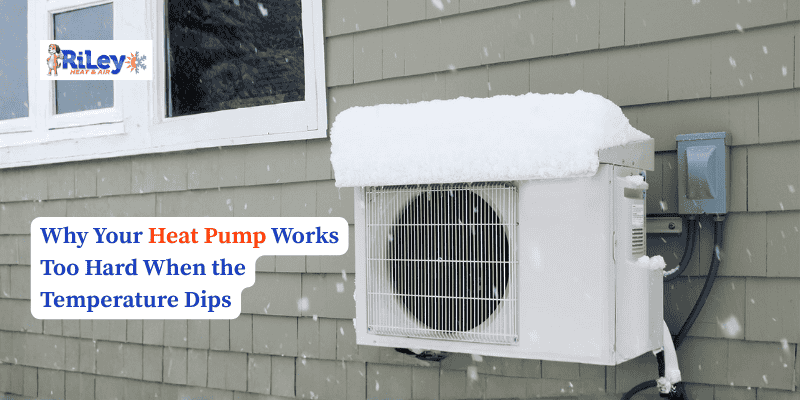
Comparing Central Air vs. Ductless Systems for Washington DC Installations
Air conditioning is indispensable for maintaining residential comfort during warmer months. The ideal system, however, varies based on factors such as home size, climate, and architectural design. Central air conditioning and ductless systems are two primary options. To help you in selecting the most suitable cooling solution for your home, we will explore the key differences between these systems.
What Are Ductless Heating and Cooling Systems?
Ductless heating and cooling systems, also referred to as mini-split systems, offer a duct-free approach to home comfort. These systems feature indoor units installed directly on walls and outdoor units that house the compressor.
Also, as they bypass the need for ductwork, ductless systems often prove more energy-efficient and cost-effective to install in homes without existing duct systems. However, multiple indoor units may be required to achieve comprehensive cooling throughout the house.
What Are Central Air Conditioning Systems?
Central air conditioning relies on ductwork to distribute cooled air evenly across your home. The system's outdoor unit, typically located on the roof or ground level, houses the compressor. Indoor comfort is controlled through vents.
Homes with existing forced-air heating systems can often use the same ductwork for central air conditioning, eliminating the need for new duct installation.
Comparing Central Air vs. Ductless Systems for Washington DC Installations
Home cooling systems function similarly to refrigerators, making use of a refrigeration cycle to regulate indoor temperatures. This process involves converting liquid to gas and back, subsequently cooling and dehumidifying the air. A fan then distributes this cooled air throughout the home.
While portable window units offer a cooling solution, most homeowners opt for whole-house systems. These systems are primarily categorized as either central or ductless air conditioning units. Here are the differences between central air and ductless systems:
1. Maintenance and Care

Both central air conditioning and ductless systems are essential for home comfort, yet they differ significantly in AC maintenance requirements. While both systems necessitate monthly air filter cleaning and biannual professional inspections, central air conditioning introduces the added complexity of ductwork.
Note that the need for ducts in central air conditioning systems demands regular cleaning or inspection every 3-5 years to ensure optimal performance and indoor air quality. In contrast, ductless systems require less intensive maintenance. As a result, ductless systems offer homeowners a more streamlined approach to home cooling.
2. Efficiency
Ductless mini-split systems often offer superior energy efficiency compared to central air conditioning units. This enhanced efficiency is from the elimination of ductwork, a common cause of energy loss. Energy Star reports that up to 30% of conditioned air can escape through leaks, holes, or poorly sealed ducts in central AC systems.
To accurately assess a cooling system's efficiency, homeowners should consider the Energy Efficiency Ratio (EER), which measures performance under specific conditions. A higher EER indicates greater efficiency. Generally, ductless systems have significantly higher EER ratings, resulting in lower energy consumption and reduced utility bills.
3. Zoned Control
Central air conditioning systems rely on a single thermostat to regulate temperature throughout the entire home. However, ductless systems allow for individual control of each room or zone, as they are unlike central air conditioning systems. This flexibility enables homeowners to maintain optimal comfort levels in different areas without compromising energy efficiency.
While high-end central air conditioning units may include zoning features, ductless systems typically provide superior customization and performance. By targeting cooling where it is needed most, ductless systems can significantly reduce energy consumption.
4. Heating Capabilities
During colder weather, it is important to consider your home comfort options. While central air conditioning systems perform better at cooling, they are designed for the summer months. To achieve year-round climate control, these systems necessitate the additional installation of a furnace or heat pump, significantly increasing upfront costs.
On the other hand, ductless systems offer a comprehensive solution. They provide both heating and cooling capabilities within a single unit. This capability removes the need for multiple systems.
5. Lifespan

When considering home cooling systems, factors such as longevity, efficiency, and comfort are key. Central air conditioning units, while a popular choice, typically have a lifespan of 10 to 15 years when subjected to proper maintenance. However, the system's actual life expectancy is significantly influenced by installation quality and maintenance.
In contrast, ductless systems have shown superior durability. With adequate maintenance, these systems can exceed a lifespan of 20 years. This longevity makes ductless systems a compelling option for homeowners seeking long-term home comfort solutions.
6. Safety
Ductless systems offer a superior alternative to central air conditioning for achieving optimal home comfort and indoor air quality. By eliminating the need for ductwork, these all-electric systems mitigate health risks associated with dust, mold, and potential gas leaks.
Furthermore, this ductless design also contributes to enhanced energy efficiency. As a result, ductless systems provide a cleaner, safer, and more comfortable living environment.
7. Noise
Central air conditioning systems are known for generating substantial noise due to the operation of the main unit and the accompanying ductwork. In contrast, ductless systems are popular for their quiet performance.
Ductless systems use compact tubing to connect indoor and outdoor components. This eliminates the whooshing sounds common with central air conditioning and the disruptive motor hums of window units. As a result, ductless systems provide a significantly quieter cooling experience. They are ideal for individuals prioritizing home comfort.
Conclusion
Several factors influence the selection of a home cooling system in Washington, DC. Both central air conditioning and ductless systems offer distinct characteristics. The optimal choice between central air and ductless systems depends on specific home characteristics, energy efficiency goals, and desired comfort levels. Careful consideration of factors such as installation costs, ongoing maintenance requirements, and long-term energy savings is essential for making an informed decision.
Tags :






